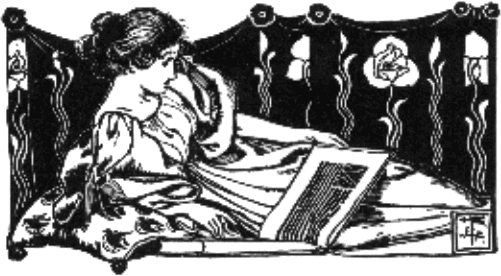|
IN
A SMALL and beautiful 14th Street apartment in San Francisco, a place
with a velvety feel and filled with things antique-y and wooden, strewn
with flowers of the fake and dead varieties, lives and works Kirsten
Janene-Nelson. Like her personal headquarters, Janene-Nelson is
beautiful in a velvety, Ophelia sort of way, with long, long hair and
long skirts that sweep against her rugs. On 14th Street she makes
books, books that are curious and interesting and politically relevant
and tied to our cultural past. Janene-Nelson is the sole force behind
Mercury House, a very small press kept afloat with grant money,
dedicated to putting out into the world — according to its manifesto —
"works of social significance." It aims "to promote the free exchange
of ideas, including minority viewpoints, by providing our writers with
both an enduring format and the widest possible audience for their
work."
Not
content with simply sniffing out important literature slinking beneath
the shallow radar of mainstream publishing, Mercury House delves into
the past to rescue noteworthy books that a fickle industry abandoned
once the initial flash of novelty wore off. "I personally abhor the
publishing world's focus on only the newest works," Janene-Nelson says.
"I feel that a worthy title remains worthy, so we're putting some extra
effort into yesterday's publications."
One
such title is Charles Wright's lost classic, THE WIG, an experimental
mosh pit of realism, fantasy, fiction, and journalism, revolving around
the adventures of one Lester Jefferson, an African American man living
in Harlem in the 1960s. Once a subject of a New York Times essay that
deemed it "a brutal, exciting and necessary book," THE WIG was allowed
to fade from publication and remained out of print until Mercury House
put it back on the shelves.
It
was the intention of the press's founders, William Brinton and Alev
Lytle Croutier, to focus on emerging American writers and
high-integrity authors from throughout the world. Janene-Nelson became
involved with the press as a volunteer reader in 1991, was promoted to
volunteer intern a year later, and was eventually hired as an editorial
assistant in 1993. Since that time she's held every position the small
press needs filled. "We had two employees and a few interns at our
Mission District office," she recalls, "when the high commercial rents
of the dot-com craze finally forced us to close down the office and
reduce the staff to just me, working out of my apartment." The major
shift occurred in the winter of 2001.
Mercury
House is currently producing books in its National Endowment for the
Arts Heritage and Preservation Series, a collection funded by the
government arts behemoth to promote the "multicultural diversity of
American letters." "We've just published RUNNING THROUGH FIRE: How I
Survived the Holocaust, by Zosia Goldberg, as told
to Hilton Obenzinger," Janene-Nelson says. "Hilton, a Mercury author,
tried for years to find a publisher for his aunt's remarkable story of
evading death during the Nazi regime. But there are many Holocaust
memoirs available now, and most publishers shy away from them. Even
when Paul Auster, who has long admired this story, offered to write an
introduction for the book, finding a publisher was difficult – until
Hilton and I started talking."
Publishing
but one book a year, Mercury House is probably the teensiest David in
the perpetual struggle against the Goliaths of big-house publishing.
And the best way to help such noble work is also the most obvious: buy
the books, and buy them from an independent source. "I'm a strong
believer in being more conscious of just who it is we're benefiting
with each purchase we make," Janene-Nelson says smartly. "In the same
way that some will go out of their way to support the corner produce
market instead of the supermarket across the street, where you make
your purchases can ultimately affect what items are still available
down the line. To buy all your books and CDs from huge chain stores and
large online dealers is to assist in the demise of your friendly corner
book- or record store. If we care about certain entities staying in
business – our favorite neighborhood restaurant, that vibrant
performance space down the street – then we need to do our part to
support them while they're still around to support."
And
with this I leave Janene-Nelson in her office, a tiny room with a
ceiling hung with stiffly swaying bundles of dried flowers. "They
oscillate in the breeze," she says, "and lend a calming effect to my
work environment. One tall sunflower a friend grew from seed." She
points at the crinkled stalk, and I think that this appreciation for
the slow and tender progress of organic things like flowers and books,
this desire to preserve beautiful objects and stories that others might
toss in the garbage or pulp, is what Mercury House is all about.
|



